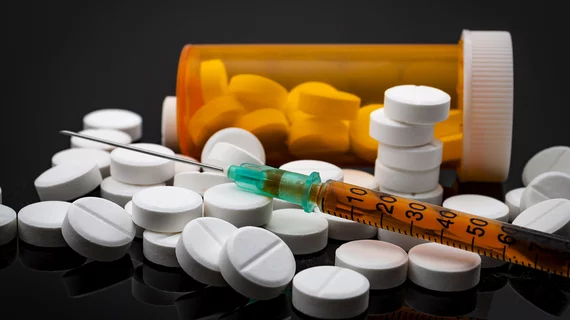70% of Americans feel opioid misuse is a statewide problem
The CDC reported more than 60 percent of drug overdose deaths involve an opioid. And in the past two decades, opioid-related overdose deaths has increased by more than five times.
Americans are feeling opioid misuse's effect on their communities.
A new report issued by Politico and the Harvard T.H. Chan School of Public Health surveyed Americans’ views on opioids. A total of 69 percent of Americans believe opioid misuse is a very or somewhat serious problem in their state. However, few are aware of measures taken by their state to address the problem.
“Governments at the local, state and federal levels have dedicated substantial resources to combat the opioid epidemic since 2010, when prescriptions for narcotic painkillers reached their peak in the U.S.,” according to the survey report. “Since 2001, every state in the nation has enacted one or more laws to broaden access to naloxone, a drug designed to rapidly reverse opioid overdoses.”
Of the 31 percent of Americans who are aware of their state’s efforts to curb opioid misuse, more than half—52 percent—believe the efforts will be effective at reducing misuse.
The statistics highlighting national efforts are just as bleak. Three months after President Donald Trump announced his Initiative to Stop Opioid Abuse and Reduce Drug Supply and Demand, only 47 percent of Americans said they heard or read about his plan. And only 46 percent of those who know or read about the initiative believe it will help to curb opioid misuse and 41 percent do not believe it will reduce opioid misuse.
About 44 percent of Americans thought state governments should be primarily responsible for regulating opioid addiction treatment centers, while 33 percent of Americans thought the federal government should bear responsibility.
Nearly two-thirds of Americans have heard or read about the rising death rates from opioid use—of which 70 percent are Republicans and 77 percent are Democrats. Most Americans believe heroin and strong prescription painkillers such as Percocet, OxyContin or Vicodin are major causes of the increase in death rates. Roughly 60 percent believe the use of Fentanyl is a major cause. Originally developed to treat severe pain during cancer treatment or after surgery, Fentanyl is 50 to 100 times more potent than morphine and often illegally trafficked into the U.S. from China or Mexico, the report stated.
The report noted 39 percent of Americans believe the federal government needs to increase spending on treatment programs, while 26 percent believe spending levels were about right and 15 percent thought they were too high. Democrats were more likely to feel that spending for treatment programs is too low.
A 79 percent majority, or nearly four of five Americans, believe opioid misusers are effectively treated if they no longer misuse opioids and do not need any medicine to control opioid cravings. But 66 percent of Americans believe opioid misusers would be effectively treated if they no longer misuse opioids, along with long-term treatment, including counseling and non-opioid, non-addictive medicine to control their cravings.

